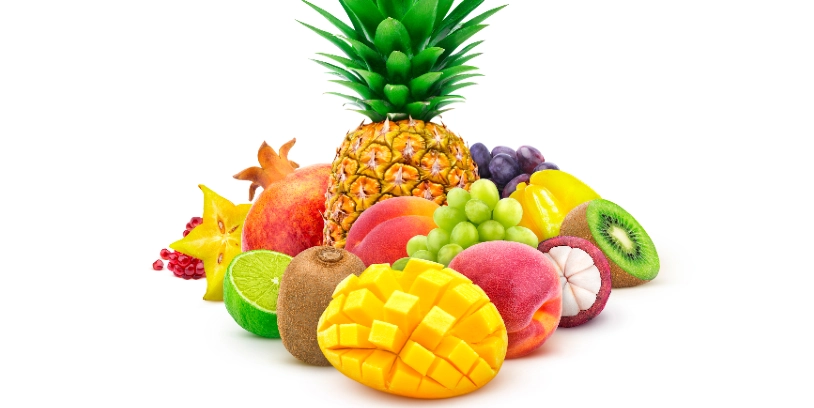Fruits play a fundamental role in Hispanic cuisine, from traditional desserts to sauces for main dishes. Their culinary versatility has been a determining factor in their prominent presence in Hispanic cuisine.
Among the diversity of fruits consumed by Hispanics, bananas, strawberries, pineapples, mangos and blueberries stand out as their favorites, further cementing their place in consumer tastes throughout 2023.
The high consumption of bananas among Hispanics can be attributed to a combination of factors beyond simple availability and accessibility.
The preference for this fruit is supported by its versatility in the kitchen, as well as its remarkable nutritional benefits.
In 2023, Guatemala, Costa Rica, Ecuador, Honduras, and Mexico stood out as the leading exporters of bananas to the United States. Together, these five countries contributed an impressive 92% of the total volume of fresh bananas imported.
Strawberries, on the other hand, stand out for their wide availability, being easily accessible in supermarkets and local markets, which facilitates their incorporation into the diet of the Hispanic population.
In addition to their accessibility, strawberries are a rich source of essential nutrients such as vitamin C, manganese, folic acid, and potassium. Their culinary versatility allows them to be integrated into various ways in gastronomy, whether through fresh salads, irresistible desserts, sauces, refreshing drinks, or classic tamales and empanadas.
By 2022, the United States managed to market a total of 2.32 billion pounds of strawberries. However, throughout 2023, this figure experienced an increase, reaching a total of 2.36 billion pounds, representing an increase of 1.5%.
This last year stood out as the period with the highest volume traded in the previous five years.
The presence of pineapple in Hispanic cuisine reflects the amalgam of culinary preferences, the search for healthy eating habits, and the deep-rooted influence of cultural traditions.
This fruit remains available year-round in supermarkets, making it a constant choice for families.
In 2023, 87% of pineapples consumed in U.S. households came from Costa Rica. Costa Rica experienced a 5.4% increase in pineapple exports to the United States over the previous year.
In this context, it is interesting to note that, despite growing demand, the U.S. consumer paid a maximum domestic price of $3.35 per pineapple while the minimum price remained at $2.13. This variability in costs suggests dynamism in the pineapple market, influenced by factors such as supply and demand, climatic conditions, and agricultural practices.
On the other hand, mangoes, a fruit much appreciated by Hispanic families, maintained a total import of 1.255 billion pounds in 2023, experiencing an increase of 0.44% compared to the previous year.
However, a 39% decrease in traded volume was observed during the last quarter of the year, in contrast to the same period in 2022. This decrease can be attributed mainly to the effects of the El Niño phenomenon in the regions of Ecuador and Peru.
During August in the Cerecita region of Ecuador, one of the main mango-producing areas, temperatures of up to 93° Fahrenheit were recorded. This contrasts with the maximum temperatures reached during the same period in 2022, which were 84° Fahrenheit.
Related Article: What Affects Blueberry Production and Trade?
These extreme weather changes negatively impacted mango production and trade.
The blueberry, due to its remarkable nutritional benefits, such as its high vitamin C and phytonutrient content, has gained popularity among the Hispanic community.
More and more people are looking to incorporate this fruit into their daily diet, whether enjoying it in smoothies, yogurts, cereal bars, or baked goods. In addition, it cannot be overlooked that it has become one of the favorite snacks for children in families.
However, towards the end of the year, blueberry availability was affected by the impact of the El Niño phenomenon, especially in Peru, one of the countries most affected by drought and high temperatures.
This impact was reflected in prices at the Peruvian blueberry border in Philadelphia, which reached record levels in November. Peak prices reached $55, more than triple the maximum price recorded in 2022, which was $16.
As we can appreciate, the consumption of these five fruits continued their ascent in 2023 despite the weather challenges some of them faced.
These fruits have taken root on the table of Hispanic families, becoming indispensable items. It is worth noting that in Hispanic culture, offering fruit is considered not only a custom, but also a significant gesture of kindness and generosity.
Sharing a fresh fruit thus becomes a beautiful expression of affection and concern for others.






